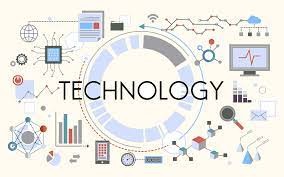
The Evolution of Technology Past, Present, and Future
Technology has always been attached or formed a major pillar of human economy and social activities throughout history. That evolution is one glorious narrative of innovation and adaptation, as well as the dogged commitment to betterment. It is knowledge that aids in making comprehensible as to where we had come from and where are going to. Also, check Intel’s Latest Chips Aim to Revitalize Market Presence
The Past: Foundations of Innovation
Lastly technology has a history beginning from the pre historic periods when early humans used technology in form of stone and wooden gadgets. In about 3500 B.C. the wheel was invented and this revolutionized bargaining and trade as well as movement. To the next period, Ancient civilizations whereby tools like writing, metals and irrigation systems where invented. Education and healing helped to create the premise for societies to emerge to foster the complexities of communities.
Technology was given a new twist by the Industrial Revolution which taken place during the 18th/19th centuries. This revolution was characterized steering engines, mechanized textile production and improved metallurgy which alone made the change from agrarian to industrial. This period not only increased efficiency but re-shifted social dynamic across the length and breadth, thereby causing urbanization and new working population.
Scientific progress is best seen when it comes to the 20th century developments. The telephone made by Alexander Graham Bell and the light bulb invented by Thomas Edion changed the communication process and way of life. Computers pet the mid of twentieth century and brought onset of software, inter net and the era of W,.
The Present: A Connected World
Nowadays, people have got used to the opportunities offered by digital technologies. The use of the internet in people’s everyday life has made it possible for communication to be done at very short notice, and information to be processed and accessed extremely quickly. Social media networks join more than 4.5 billion individuals, affecting the ways that they communicate.
Artificial intelligence and machine learning are in the centre of modern technological development. AI is already changing how businesses work with their customers and how the healthcare diagnose and treat their patients as well as with the algorithms determining the trading in the financial sector. Smartphones and smart home systems are among the response as people engage more into efficient ways of carrying out their daily activities.
Furthermore, the renewable energy technologies are being embraced with the increasing effects of climate change globally. Advancements in photovoltaic technologies in the use of solar and wind power together with storage systems are making a shift to green energy possible. This shift also solves environmental problems and as well as creates new economic opportunities.
The Future: Possibilities Ahead
Thus, anticipating the further development of technology, the following changes can be expected. One of the most outstanding expectations is the advancement of functionalities of AI. Since automotive AI systems are advancing, their application in numerous industries may significantly transform issues related to automated driving and individualized therapy. But this also creates certain ethical issues concerning job losses, privacy of consumers, and the right to make decisions.
Artificial intelligence is still in its emerging stage and quantum computing can significantly improve it to become one of the superior tools of computing on the planet. Real-time location systems have value to numerous industries with operations that rely on accuracy and timeliness: pharmaceutical organizations could benefit from this technology by gaining real-time solutions which we cannot even fathom at the moment; logistics and cybersecurity industries would also greatly benefit from this technology.
Besides, as technology continues to advance the future will see more technology and human life intertwined. Secrets of biotechnology and brain-computer interface can make concepts of improved cognition and health control look like cyborgs. Though such advancements are promising, they bring about many questions of ethical and moral nature that societies need to answer.
Conclusion
We continue to innovate because the development of technology shows that people want to make life better. Right from prehistoric time to the present day increased use of technological advancement in all sectors of society. Thus the scripture appeals to come as a bride to the eternal groom Jesus with an understanding of the future there is both promise and caution ahead. Integration of innovation does not equal a utilisation of better technology which has ethical consequences that must be avoided in the future for creating positive impact in humanity. So, the narrative of technology looks increasingly open-ended, and we feel welcome and encouraged to think and design the next chapter.
